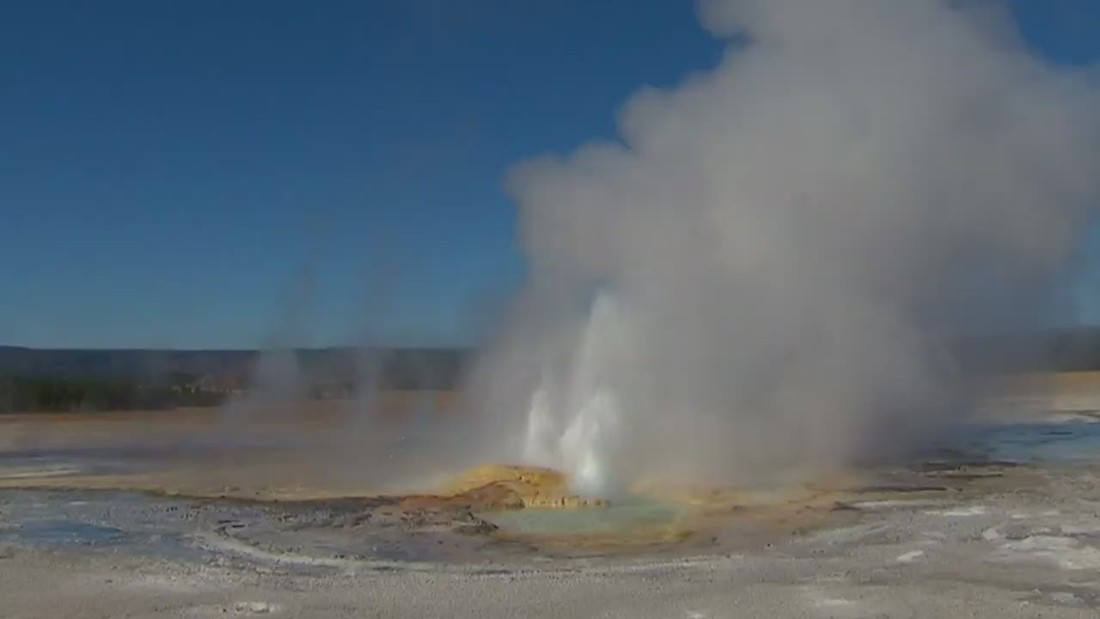Yellowstone Magma Reservoir: Understanding Future Volcanic Activity

Table of Contents
The Size and Composition of the Yellowstone Magma Reservoir
The Yellowstone magma reservoir is truly immense. It isn't a single, easily defined pool of magma, but rather a complex system of interconnected chambers and conduits extending tens of kilometers beneath the Earth's surface. Estimates place its volume in the hundreds of cubic kilometers, stretching from depths of approximately 5 km to potentially exceeding 15 km. This vastness is a key factor in the potential scale of any future eruptions.
The magma within the reservoir is predominantly rhyolitic, a silica-rich type of magma. This high silica content is significant because it influences the viscosity of the magma—how easily it flows. High-silica magmas like rhyolite are highly viscous, trapping gases within the molten rock. This can lead to extremely explosive eruptions, as the pressure from the trapped gases eventually overcomes the magma's resistance.
- Dimensions of the reservoir: While precise dimensions are difficult to determine, studies using seismic tomography and other geophysical techniques suggest a roughly ellipsoidal shape, with a major axis spanning tens of kilometers and a significant vertical extent. (Source: USGS Yellowstone Volcano Observatory)
- Types of magma present: While rhyolite dominates, other magma types, including basalt, are also likely present within the reservoir system. The interaction between these different magmas can affect the overall eruptive behavior.
- Relationship between magma composition and eruption explosivity: The high silica content of the rhyolitic magma is directly linked to the potential for highly explosive eruptions, like those that have shaped the Yellowstone caldera in the past.
Monitoring Yellowstone's Volcanic Activity
Scientists employ a sophisticated array of monitoring techniques to track the Yellowstone magma reservoir's activity and assess potential volcanic hazards. This constant vigilance is crucial for early warning systems and improving our understanding of volcanic processes.
- Seismic activity: A dense network of seismometers constantly records seismic waves, providing insights into the movement of magma and fluids within the reservoir. Changes in frequency, magnitude, and location of earthquakes can indicate changes in subsurface pressure.
- Ground deformation: GPS measurements and InSAR (Interferometric Synthetic Aperture Radar) track subtle changes in the Earth's surface, detecting uplift or subsidence caused by magma movement. Even small changes can be significant indicators.
- Gas emissions: Monitoring the release of gases like carbon dioxide, sulfur dioxide, and helium provides crucial information about the state of the magma reservoir. Increases in gas flux can precede eruptive activity.
- Geothermal activity: Changes in temperature and water flow in hydrothermal systems (geysers, hot springs) can reflect changes in the underlying heat source, providing another valuable data point for monitoring.
Predicting Future Eruptions at Yellowstone
Predicting volcanic eruptions with absolute certainty remains a significant challenge. The complex interplay of factors influencing volcanic activity makes precise predictions difficult. While we cannot predict the exact timing of a future eruption, scientists can assess probabilities and develop scenarios based on ongoing monitoring and geological history.
- Limitations of current predictive models: While our understanding of volcanic processes is constantly improving, the complexity of the Yellowstone magma reservoir makes it difficult to create perfectly accurate predictive models.
- Probabilities of various eruption magnitudes: The likelihood of a supereruption like those in the past is considered low, but smaller eruptions are statistically more probable. (Source: USGS Yellowstone Volcano Observatory)
- Time scales for potential future eruptions: The timeline for potential eruptions ranges from decades to millennia, highlighting the long-term nature of volcanic risk.
- The role of long-term monitoring: Continued, comprehensive monitoring is vital for improving our ability to predict future eruptions, identify precursors, and provide timely warnings.
The Impact of a Yellowstone Eruption
The impact of a Yellowstone eruption would depend heavily on the size and style of the eruption. While a supereruption would have global consequences, even smaller eruptions could have significant regional impacts.
- Ashfall distribution and its impact on infrastructure and agriculture: Ashfall could blanket vast areas, disrupting air travel, damaging infrastructure, and impacting agricultural productivity.
- Pyroclastic flow zones and their destructive potential: Pyroclastic flows, fast-moving currents of hot gas and volcanic debris, pose an immediate and devastating threat to areas within a certain radius of the vent.
- Lahar risks and potential inundation areas: Lahars, volcanic mudflows, could be triggered by melting snow and ice, posing a significant flood hazard downstream.
- Global climatic effects of a large eruption: A supereruption could inject massive quantities of aerosols into the atmosphere, leading to temporary global cooling and disruptions to weather patterns.
Conclusion
The Yellowstone Magma Reservoir represents a significant geological force with the potential for future volcanic activity. While predicting the precise timing and scale of any future eruptions remains a scientific challenge, ongoing monitoring efforts provide crucial data for assessing risk and improving our understanding. The immense size and complex nature of the reservoir necessitate continued research and collaboration to effectively mitigate potential hazards. Stay informed about the Yellowstone Magma Reservoir and its future activity by following the USGS Yellowstone Volcano Observatory and the Yellowstone National Park website for updates and information.

Featured Posts
-
 Osimhen Transfer Two Arab Teams Ready To Pay Release Clause
May 27, 2025
Osimhen Transfer Two Arab Teams Ready To Pay Release Clause
May 27, 2025 -
 Cosa E Successo L 8 Marzo Almanacco E Proverbio Del Giorno
May 27, 2025
Cosa E Successo L 8 Marzo Almanacco E Proverbio Del Giorno
May 27, 2025 -
 Analiz Politichnoyi Strategiyi Putina Schodo Viyni V Ukrayini
May 27, 2025
Analiz Politichnoyi Strategiyi Putina Schodo Viyni V Ukrayini
May 27, 2025 -
 Visticamak Ukrainu Gaida Ultimats Miera Ligums Vai Kars
May 27, 2025
Visticamak Ukrainu Gaida Ultimats Miera Ligums Vai Kars
May 27, 2025 -
 Osimhens Future Update On Chelsea Salary Negotiations
May 27, 2025
Osimhens Future Update On Chelsea Salary Negotiations
May 27, 2025
Latest Posts
-
 Vivian Wilsons Modeling Debut A New Chapter In Her Life
May 30, 2025
Vivian Wilsons Modeling Debut A New Chapter In Her Life
May 30, 2025 -
 From Billionaires Daughter To Model Vivians Journey
May 30, 2025
From Billionaires Daughter To Model Vivians Journey
May 30, 2025 -
 Elon Musk And Daughter Vivian A Complex Family Relationship
May 30, 2025
Elon Musk And Daughter Vivian A Complex Family Relationship
May 30, 2025 -
 The Publics Response To Vivian Jenna Wilsons Modeling Career
May 30, 2025
The Publics Response To Vivian Jenna Wilsons Modeling Career
May 30, 2025 -
 Vivian Musks Modeling Career Separating From Family Legacy
May 30, 2025
Vivian Musks Modeling Career Separating From Family Legacy
May 30, 2025
